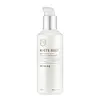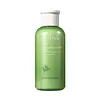What's inside
What's inside
 Key Ingredients
Key Ingredients

 Benefits
Benefits

 Concerns
Concerns

 Ingredients Side-by-side
Ingredients Side-by-side

Water
Skin ConditioningPropanediol
SolventPropylene Glycol Dicaprylate/Dicaprate
EmollientNiacinamide
SmoothingCaprylic/Capric Triglyceride
Masking1,2-Hexanediol
Skin ConditioningCyclopentasiloxane
EmollientPanthenol
Skin ConditioningCyclohexasiloxane
EmollientCetearyl Olivate
PEG-100
HumectantStearyl Stearate
EmollientGlyceryl Stearate
EmollientCetearyl Alcohol
EmollientCaprylic/Capric Glycerides
EmollientSorbitan Olivate
EmulsifyingButylene Glycol
HumectantLupinus Albus Seed Extract
Skin ConditioningBellis Perennis Flower Extract
Skin ConditioningPolyglutamic Acid
Skin ConditioningHexylresorcinol
AntimicrobialSalix Alba Bark Extract
AstringentChenopodium Quinoa Seed Extract
Skin ConditioningAcrylates/C10-30 Alkyl Acrylate Crosspolymer
Emulsion StabilisingCarbomer
Emulsion StabilisingPotassium Hydroxide
BufferingDisodium EDTA
Phenoxyethanol
PreservativeParfum
MaskingWater, Propanediol, Propylene Glycol Dicaprylate/Dicaprate, Niacinamide, Caprylic/Capric Triglyceride, 1,2-Hexanediol, Cyclopentasiloxane, Panthenol, Cyclohexasiloxane, Cetearyl Olivate, PEG-100, Stearyl Stearate, Glyceryl Stearate, Cetearyl Alcohol, Caprylic/Capric Glycerides, Sorbitan Olivate, Butylene Glycol, Lupinus Albus Seed Extract, Bellis Perennis Flower Extract, Polyglutamic Acid, Hexylresorcinol, Salix Alba Bark Extract, Chenopodium Quinoa Seed Extract, Acrylates/C10-30 Alkyl Acrylate Crosspolymer, Carbomer, Potassium Hydroxide, Disodium EDTA, Phenoxyethanol, Parfum
Water
Skin ConditioningPropanediol
SolventPentaerythrityl Tetraethylhexanoate
Emollient1,2-Hexanediol
Skin ConditioningHydrogenated Poly(C6-14 Olefin)
EmollientC14-22 Alcohols
Emulsion StabilisingCarbomer
Emulsion StabilisingTromethamine
BufferingC12-20 Alkyl Glucoside
EmulsifyingParfum
MaskingEthylhexylglycerin
Skin ConditioningDisodium EDTA
Camellia Sinensis Leaf Extract
AntimicrobialGlycine Soja Oil
EmollientLinalool
PerfumingLimonene
PerfumingButylphenyl Methylpropional
PerfumingCitronellol
PerfumingGlucose
HumectantHexyl Cinnamal
PerfumingAlthaea Officinalis Root Extract
Skin ConditioningWater, Propanediol, Pentaerythrityl Tetraethylhexanoate, 1,2-Hexanediol, Hydrogenated Poly(C6-14 Olefin), C14-22 Alcohols, Carbomer, Tromethamine, C12-20 Alkyl Glucoside, Parfum, Ethylhexylglycerin, Disodium EDTA, Camellia Sinensis Leaf Extract, Glycine Soja Oil, Linalool, Limonene, Butylphenyl Methylpropional, Citronellol, Glucose, Hexyl Cinnamal, Althaea Officinalis Root Extract
 Reviews
Reviews

Ingredients Explained
These ingredients are found in both products.
Ingredients higher up in an ingredient list are typically present in a larger amount.
1,2-Hexanediol is a synthetic liquid and another multi-functional powerhouse.
It is a:
- Humectant, drawing moisture into the skin
- Emollient, helping to soften skin
- Solvent, dispersing and stabilizing formulas
- Preservative booster, enhancing the antimicrobial activity of other preservatives
Carbomer is a polymer of acrylic acid. Its main role is to create a gel consistency.
A high amount of carbomer can cause pilling or balling up of products. Don't worry, most products contain 1% or less of carbomer.
Disodium EDTA plays a role in making products more stable by aiding other preservatives.
It is a chelating agent, meaning it neutralizes metal ions that may be found in a product.
Disodium EDTA is a salt of edetic acid and is found to be safe in cosmetic ingredients.
Learn more about Disodium EDTAParfum is a catch-all term for an ingredient or more that is used to give a scent to products.
Also called "fragrance", this ingredient can be a blend of hundreds of chemicals or plant oils. This means every product with "fragrance" or "parfum" in the ingredients list is a different mixture.
For instance, Habanolide is a proprietary trade name for a specific aroma chemical. When used as a fragrance ingredient in cosmetics, most aroma chemicals fall under the broad labeling category of “FRAGRANCE” or “PARFUM” according to EU and US regulations.
The term 'parfum' or 'fragrance' is not regulated in many countries. In many cases, it is up to the brand to define this term.
For instance, many brands choose to label themselves as "fragrance-free" because they are not using synthetic fragrances. However, their products may still contain ingredients such as essential oils that are considered a fragrance by INCI standards.
One example is Calendula flower extract. Calendula is an essential oil that still imparts a scent or 'fragrance'.
Depending on the blend, the ingredients in the mixture can cause allergies and sensitivities on the skin. Some ingredients that are known EU allergens include linalool and citronellol.
Parfum can also be used to mask or cover an unpleasant scent.
The bottom line is: not all fragrances/parfum/ingredients are created equally. If you are worried about fragrances, we recommend taking a closer look at an ingredient. And of course, we always recommend speaking with a professional.
Learn more about ParfumPropanediol is an all-star ingredient. It softens, hydrates, and smooths the skin.
It’s often used to:
Propanediol is not likely to cause sensitivity and considered safe to use. It is derived from corn or petroleum with a clear color and no scent.
Learn more about PropanediolWater. It's the most common cosmetic ingredient of all. You'll usually see it at the top of ingredient lists, meaning that it makes up the largest part of the product.
So why is it so popular? Water most often acts as a solvent - this means that it helps dissolve other ingredients into the formulation.
You'll also recognize water as that liquid we all need to stay alive. If you see this, drink a glass of water. Stay hydrated!
Learn more about Water